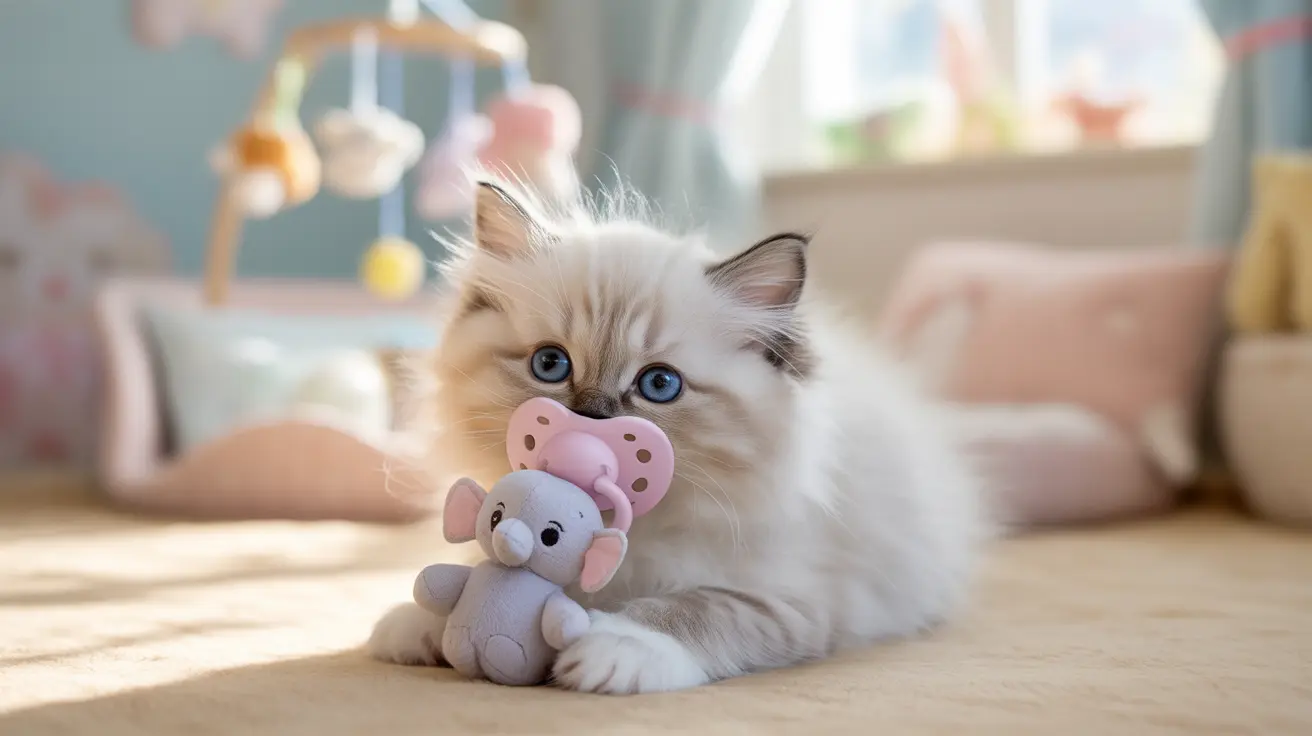For many kittens, especially those separated from their mothers too early or experiencing stress during weaning, a kitten pacifier can provide essential comfort and security. This comprehensive guide will walk you through everything you need to know about creating and using safe, effective pacifiers for your young feline companion.
Understanding why kittens need pacifiers and how to properly provide them is crucial for their emotional well-being and development. Whether you're caring for an orphaned kitten or helping one through the weaning process, this article will help you make informed decisions about kitten pacifiers.
Understanding the Need for Kitten Pacifiers
Kittens naturally have a strong suckling instinct that provides both nutrition and comfort. When separated from their mother too early, this instinct remains strong but unfulfilled, potentially leading to stress and anxiety. A properly designed kitten pacifier can help satisfy this natural urge while providing emotional comfort.
Common Reasons for Pacifier Use
Several situations may necessitate the use of a kitten pacifier:
- Early separation from mother
- Weaning difficulties
- Anxiety or stress
- Teething discomfort
- Orphaned kittens requiring additional comfort
Creating a Safe DIY Kitten Pacifier
Making a kitten pacifier at home requires careful attention to safety and material selection. Here's how to create one properly:
Materials Needed
- Small silicone or latex baby pacifier
- Soft, familiar cloth or small plush toy
- Strong, short piece of cord or thread
- Sanitizing solution
Assembly Steps
- Thoroughly clean and sanitize the pacifier
- Securely attach the pacifier to the comfort object
- Trim any excess cord to prevent entanglement
- Test the attachment strength before giving to kitten
Commercial Alternatives and Safety Considerations
While DIY options can work well, several commercial products are specifically designed for kittens:
- Specially designed kitten pacifiers with appropriate sizing
- Veterinary-approved nursing devices
- Comfort toys with built-in suckling features
Safety Guidelines
When using any type of kitten pacifier, always:
- Inspect regularly for wear and damage
- Clean thoroughly between uses
- Monitor your kitten during use
- Remove immediately if any parts become loose
- Replace at first signs of deterioration
Best Practices for Pacifier Introduction
Successfully introducing a pacifier requires patience and proper timing:
- Present the pacifier during calm moments
- Associate it with positive experiences
- Never force use if the kitten shows resistance
- Maintain consistent cleaning routines
- Gradually phase out as the kitten matures
Frequently Asked Questions
Why do some kittens need a pacifier and when is it necessary to use one?
Kittens may need pacifiers when separated from their mother too early, during weaning, or when experiencing stress. It's necessary when you observe excessive suckling behaviors on inappropriate objects or when the kitten shows signs of anxiety and comfort-seeking behavior.
How can I safely make a DIY kitten pacifier at home for my orphaned or early-weaned kitten?
Create a safe DIY pacifier by using a small silicone or latex baby pacifier attached securely to a familiar soft cloth or plush toy. Ensure all materials are thoroughly cleaned and any attachment cords are kept short to prevent hazards.
What materials and types of pacifiers are best suited for kittens' comfort and teething relief?
Soft silicone or latex materials are best suited for kittens. Avoid hard plastics that could damage developing teeth. Look for materials that are durable, easy to clean, and specifically designed for infant animals.
How can a kitten pacifier help reduce problematic suckling behaviors on blankets, furniture, or people?
A proper kitten pacifier redirects natural suckling instincts to an appropriate object, preventing damage to household items and reducing unwanted behaviors. It provides a safe outlet for the kitten's comfort-seeking needs.
What safety precautions should I take when using a pacifier with my kitten?
Always supervise pacifier use, regularly inspect for damage, clean thoroughly between uses, ensure there are no loose parts or long cords, and remove immediately if any signs of wear appear. Replace the pacifier if it becomes damaged or worn.
Conclusion
A properly made and maintained kitten pacifier can be an invaluable tool in providing comfort and security to young cats. Whether you choose to make your own or purchase a commercial option, following proper safety guidelines and introduction techniques will help ensure the best outcome for your kitten's well-being.






